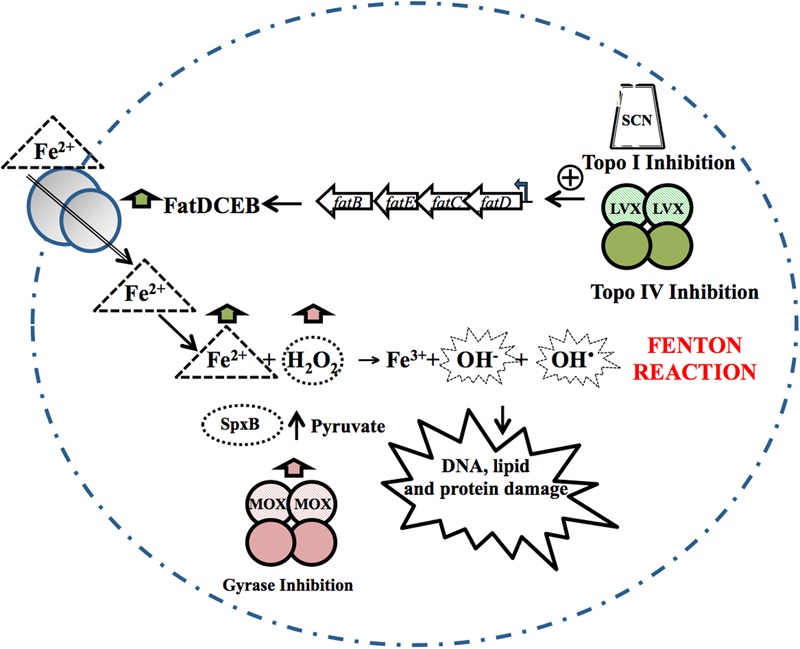FIGURE 2.

Oxidative damage cell death pathway. The inhibition of Topo IV by LVX, or of Topo I by SCN, causes a local increase in supercoiling, resulting in the up-regulation of the fatDCEB operon. The consequent increase in the iron transporter it encodes causes an increase in intracellular Fe2+. MOX alters the transcriptome, up-regulating genes from several metabolic pathways involved in the production of pyruvate. Pyruvate can then be converted by pyruvate oxidase (SpxB) into hydrogen peroxide (H2O2). Fe2+ and H2O2 are the substrates of the Fenton reaction. The Fenton reaction renders hydroxyl radicals, which oxidatively damage DNA, proteins and lipids. Taken from Ferrándiz and de la Campa (2014), with modifications.
